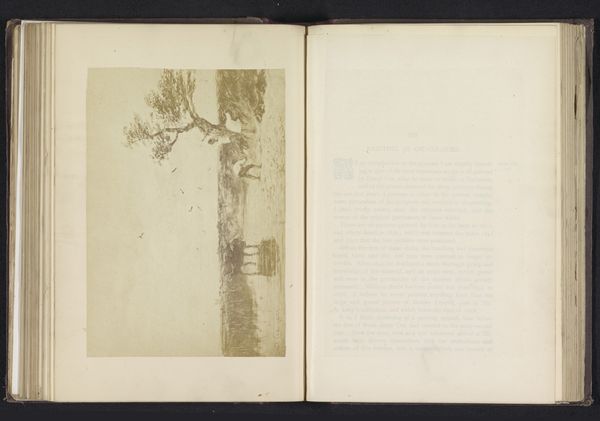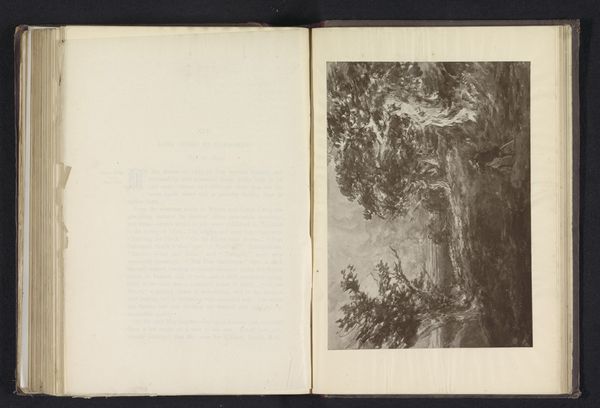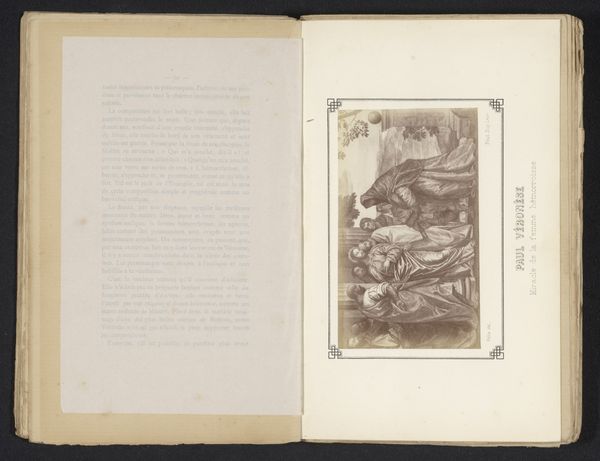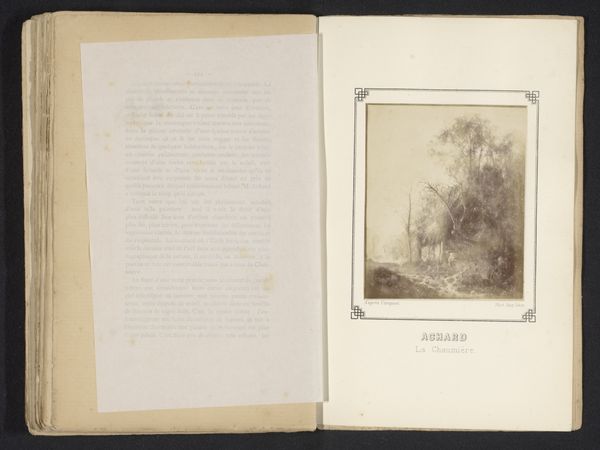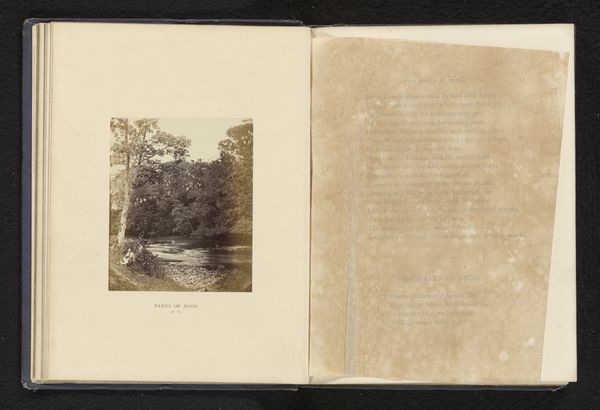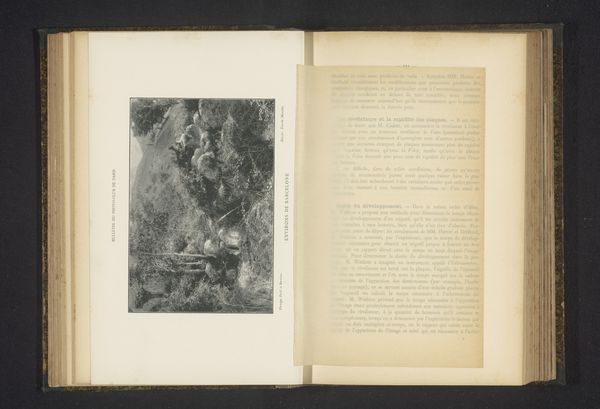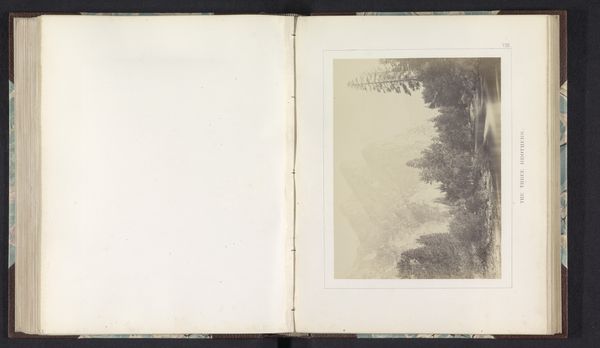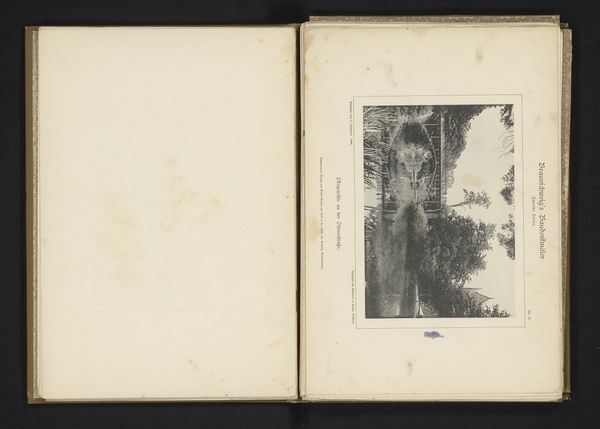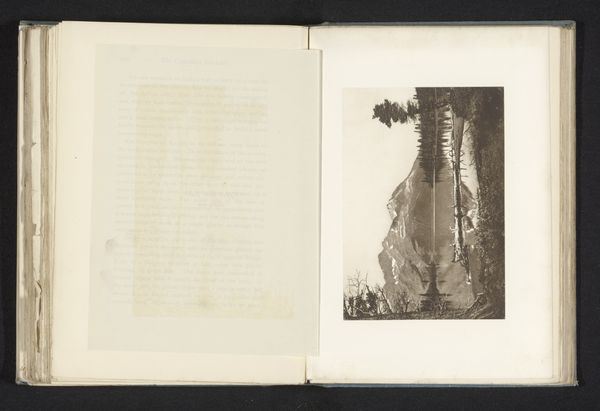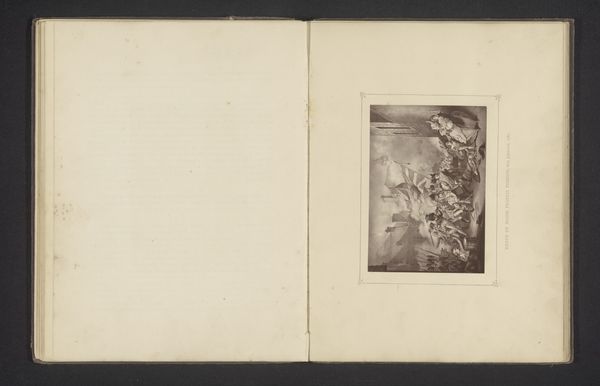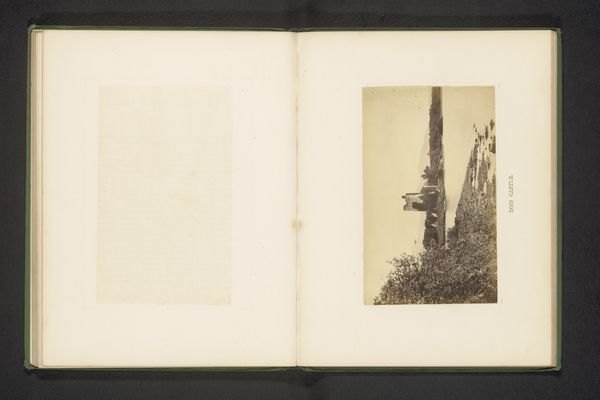
Dimensions: height 98 mm, width 127 mm
Copyright: Rijks Museum: Open Domain
Editor: This is a photographic reproduction of Claude Lorrain’s "Paysage Pastoral," dating to before 1879, taken by E. Léon. The print, with its faded sepia tones, captures a dreamy, almost melancholic scene. I'm curious, what story do you think this image is telling? Curator: What I find particularly compelling is how this photograph invites us to consider the romanticized vision of the pastoral and its potential socio-political underpinnings. Lorrain painted during a time of vast social inequality and colonialism. Do you think the idealization of rural life served as a kind of escapism or even a justification for the existing power structures? Editor: That's a perspective I hadn't considered. I guess the seemingly peaceful image could be masking a more complex reality. But what about the choice of photography to reproduce the painting? Curator: Exactly! Think about it. Photography itself was emerging as a powerful medium, democratizing image production. By reproducing Lorrain’s painting through photography, Léon could be seen as engaging with the accessibility of art and knowledge while also contributing to the romantic ideal of the past. How might the consumption of these idealized landscapes affect contemporary viewers? Editor: It's interesting to think about how the layering of different media and time periods changes the meaning. I appreciate you making me question the image’s surface. Curator: And I appreciate you prompting this dialogue. It reinforces the importance of viewing art, even seemingly straightforward landscapes, through critical lenses that examine history, power, and representation.
Comments
No comments
Be the first to comment and join the conversation on the ultimate creative platform.
